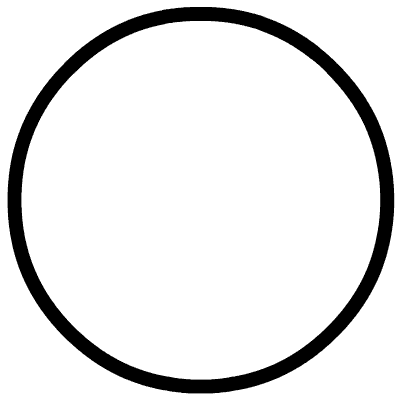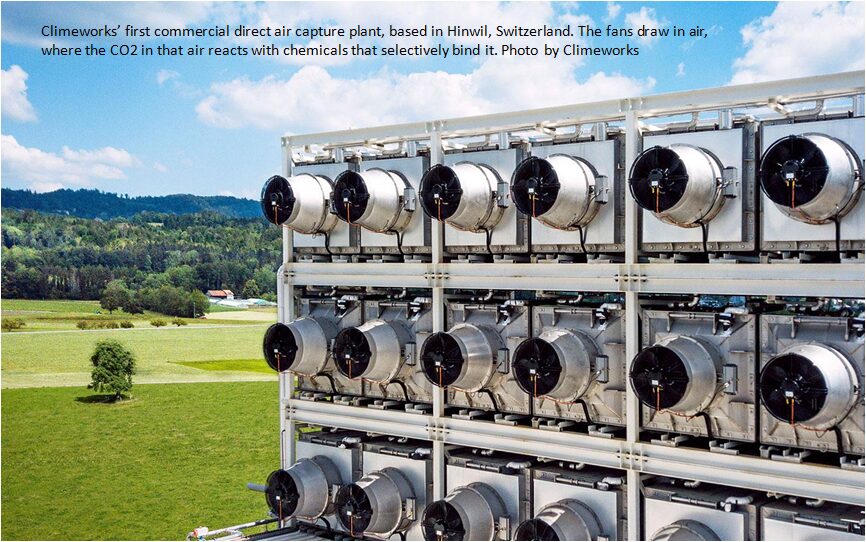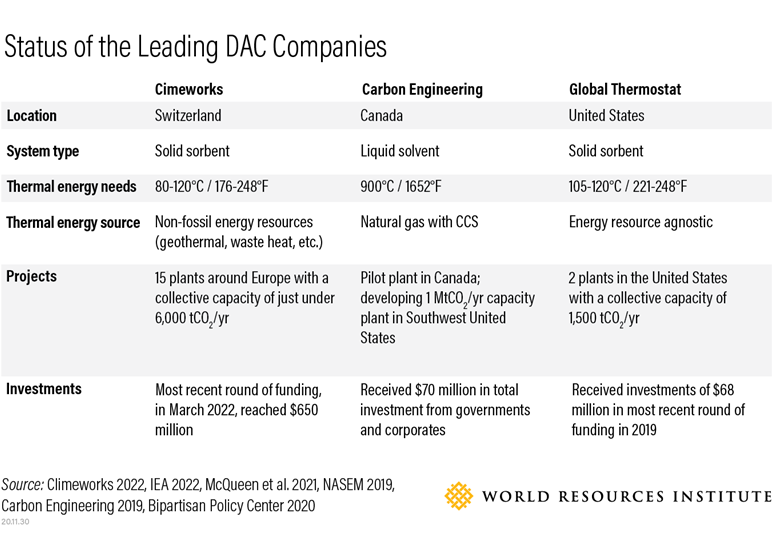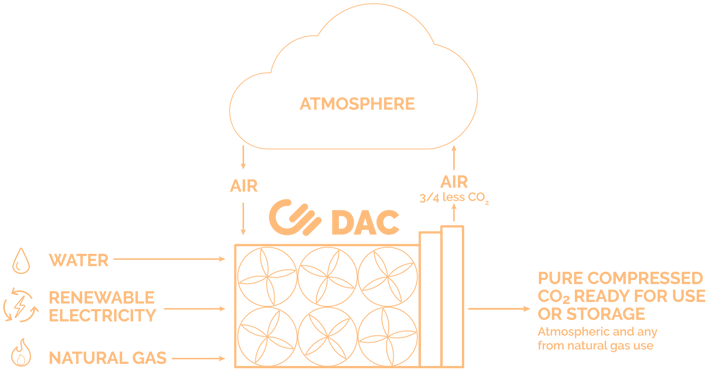CCTC® Click the blue text above to follow 
Brief Overview: Direct Air Capture (DAC) Technology Introduction

“Huaxia Climate welcomes business/ manuscripts/ advertising cooperation
Direct Air Capture (DAC) is a carbon reduction technology that involves pulling air from the atmosphere and using chemical reactions to separate carbon dioxide gas.
The captured carbon dioxide can be stored underground or used to manufacture durable materials such as cement and plastics. The goal of direct air capture is to lower the overall concentration of carbon dioxide in the atmosphere through technological means. By doing so, direct air capture can help mitigate the destructive impacts of the climate crisis alongside other initiatives.
According to the International Energy Agency (IEA), there are 15 operational direct air capture plants in the United States, Europe, and Canada. These plants capture over 9,000 tons of carbon dioxide each year. The U.S. is also developing a direct air capture unit capable of removing 1 million tons of carbon dioxide from the air annually.
The United Nations Intergovernmental Panel on Climate Change (IPCC) warns that to keep atmospheric carbon dioxide levels below 440 ppm and global temperature rise below 2 degrees Celsius (3.6 degrees Fahrenheit), global carbon dioxide emissions must be reduced by 30% to 85% before 2050. Can direct air capture help reduce emissions?
To slow the progression of climate change, scientists and economists from the Intergovernmental Panel on Climate Change unanimously agree that long-term measures are needed to reduce anthropogenic greenhouse gas emissions. Direct air capture technology has been widely criticized for being insufficient on its own to lower harmful carbon dioxide levels in the atmosphere. Additionally, the cost of capturing one ton of carbon dioxide is higher than other strategies to mitigate the climate crisis.
01 How Direct Air Capture Works

Direct air capture uses two different methods to remove carbon dioxide directly from the atmosphere. The first method involves using solid adsorbents to absorb carbon dioxide. An example of a solid adsorbent is a basic chemical placed on the surface of solid materials. When air flows over the solid adsorbent, a chemical reaction occurs that binds acidic carbon dioxide gas with basic solids. When the solid adsorbent is saturated with carbon dioxide, it is either heated to 80°C to 120°C or a vacuum is applied to extract the gas from the solid adsorbent, allowing it to cool and be reused.
The second type of direct air capture system uses liquid solvents, which is a more complex process. It begins with a large container where a basic solution of potassium hydroxide (KOH) flows over a plastic surface. Air is drawn into the container by large fans, and when the carbon dioxide-laden air contacts the liquid, a chemical reaction occurs, forming a carbon-rich salt.
The salt flows into another chamber where another reaction occurs, producing a mixture of solid calcium carbonate (CaCO3) particles and water (H2O). The mixture of calcium carbonate and water is filtered to separate the two. The final step in the process is to heat the solid calcium carbonate particles to 900 degrees Celsius using natural gas, releasing high-purity carbon dioxide gas, which is then collected and compressed.
The remaining materials are recycled back into the system for reuse. Once carbon dioxide is captured, it can be permanently injected into underground rock formations to help revive old oil wells or used in durable products such as plastics and building materials.
02 Differences Between Direct Air Capture and Carbon Capture and Storage
Many experts believe that both direct air capture and carbon capture and storage (CCS) systems are key technologies in addressing the climate crisis. Fundamentally, both technologies reduce the amount of carbon dioxide that could enter the atmosphere. However, unlike direct air capture, CCS uses a chemical substance to capture carbon dioxide directly from emission sources. This prevents carbon dioxide from entering the atmosphere. For example, CCS can capture and compress all carbon dioxide emissions from coal-fired power plant chimneys, while direct air capture collects carbon dioxide that has already been released into the air from coal-fired power plants or other fossil fuel combustion operations.
Both direct air capture and CCS use basic compounds such as potassium hydroxide and amine solvents to separate carbon dioxide from other gases. Once carbon dioxide is captured, both processes must compress, transport, and store the gas. While CCS technology is somewhat more mature than direct air capture technology, both are relatively new technologies that can benefit from further development.
Because CCS removes carbon dioxide at the source, it can only be used where fossil fuel combustion occurs, such as industrial facilities and power plants. In theory, direct air capture can be used anywhere, although placing it near power sources or locations where carbon dioxide can be stored would improve efficiency.
03 Current Development Status of Direct Air Capture
According to the World Resources Institute, there are three leading direct air capture companies in the world: Switzerland’s Climeworks, America’s Global Thermostat, and Canada’s Carbon Engineering. Two of these companies use solid adsorption technology to remove carbon dioxide, while the third company uses liquid solvent carbon engineering. The number of operational and pilot plants is changing annually, but the world’s first commercial-grade DAC facility currently removes 900 tons of carbon dioxide annually, with several commercial facilities under construction.

In the past 15 years, a direct air capture pilot plant in Squamish, British Columbia, Canada, has used renewable electricity and natural gas to fuel the liquid solvent process, removing 1 ton of carbon dioxide daily. This company is currently building another direct air capture facility that will be capable of capturing 1 million tons of carbon dioxide annually.
Another direct air capture plant being built in Iceland will be able to capture 4,000 tons of carbon dioxide annually, which will then be permanently stored underground. The company building this plant currently has 15 smaller direct air capture plants around the world.

04 Pros and Cons of Direct Air Capture
The most obvious advantage of direct air capture is its ability to lower carbon dioxide concentrations in the atmosphere. It is not only more broadly applicable than CCS, but it also occupies less space compared to other carbon storage technologies for capturing equivalent amounts of carbon. Additionally, direct air capture can also be used to produce synthetic hydrocarbons fuels. However, for it to be effective, this technology must be sustainable, affordable, and scalable. So far, direct air capture technology has not met these requirements.

Companies specializing in direct air capture technology are currently developing new, larger direct air capture plants with capacities of up to 1 million tons of carbon dioxide per year. If sufficiently small direct air capture units are produced, they could capture up to 10% of human-generated carbon dioxide. By injecting and storing carbon dioxide underground, carbon can be permanently removed from the cycle.
Since it relies on capturing carbon dioxide from the atmosphere rather than directly from fossil fuel emissions, direct air capture can operate independently of power plants and other fossil fuel combustion facilities. This allows for more flexible and widespread placement of direct air capture plants.
Compared to other carbon capture technologies, direct air capture requires less land to remove each ton of carbon dioxide.
Additionally, direct air capture can reduce the need for fossil fuel extraction by combining captured carbon dioxide with hydrogen to produce synthetic fuels such as methanol, further reducing the amount of carbon dioxide released into the atmosphere.
Direct air capture is more expensive than other carbon capture technologies (such as reforestation and afforestation). Some direct air capture plants currently have costs ranging from $250 to $600 per ton of carbon dioxide, estimated to be between $100 and $1,000 per ton according to researchers from the RFF-CMCC European Economic and Environmental Research Institute, with future costs of direct air capture remaining uncertain as they will depend on the pace of technological advancements. However, reforestation costs only $50 per ton.
The high price of direct air capture technology is due to the large amount of energy required to remove carbon dioxide. The heating processes for liquid solvents and solid adsorbents in direct air capture are highly energy-intensive, requiring heating chemicals to 900°C and 80°C-120°C, respectively. Unless a direct air capture plant relies solely on renewable energy for heat, it will still need to use some fossil fuels, even if the process ultimately results in negative carbon emissions.
This article is based on Emily Rhode’s “What Is Direct Air Capture? Does It Work?”
Source: Extraordinary Energy
How Much Does Direct Air Capture Cost?
Despite the benefits and flexibility, direct air capture is more costly per tonne of CO2 removed compared to many mitigation approaches and natural climate solutions as it is energy intensive to separate carbon dioxide from ambient air. The range of costs for DAC vary between $250 and $600 today depending on the technology choice, low-carbon energy source, and the scale of their deployment; for comparison, most reforestation costs less than $50/tonne.
However, depending on the rate of deployment, which could accelerate through supportive policies and market development, costs for DAC could fall to around $150–$200 per tonne over the next 5-10 years. Going further than this, the Department of Energy launched its Carbon Negative Shot initiative in late 2021, which aims to reduce the cost of carbon removal technologies and approaches that could reach gigaton scale to $100/tCO2 over the next decade.
CCTC®

Follow for more climate (narrow/general) news
Please long press to recognize the QR code below
Follow Huaxia Climate





















